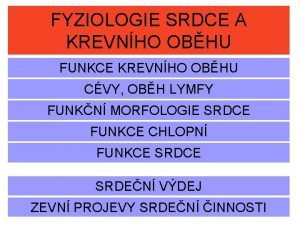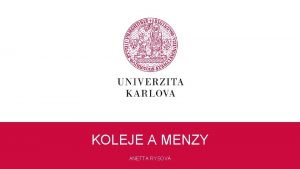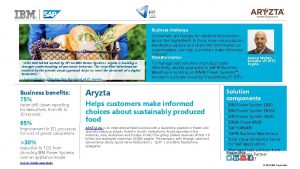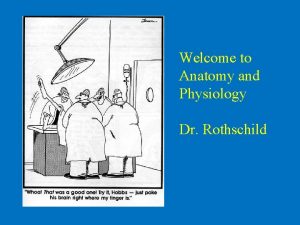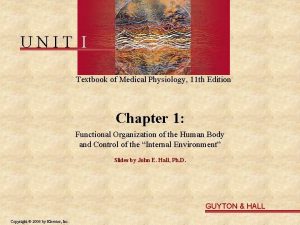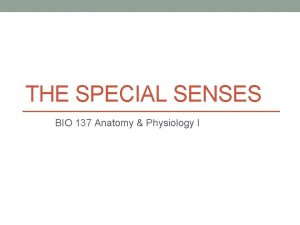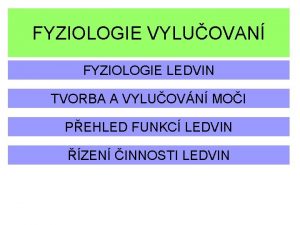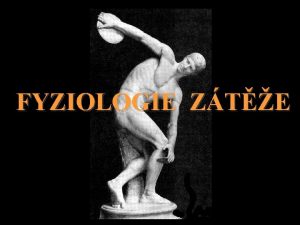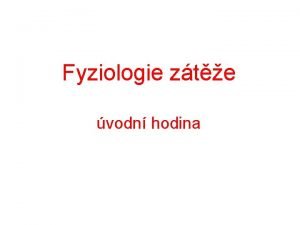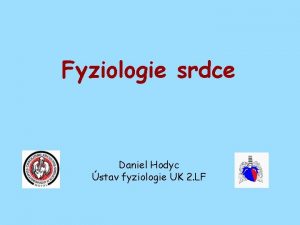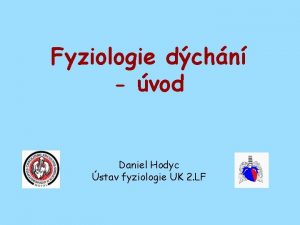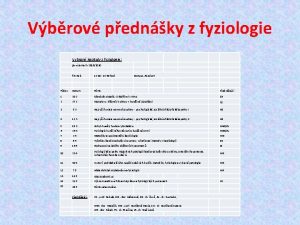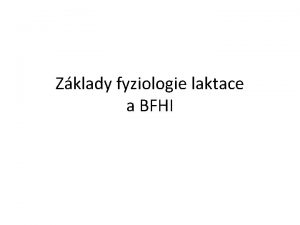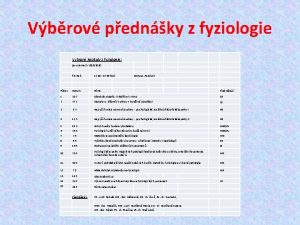Physiology introduction http fyziologie lf 2 cuni cz















- Slides: 15

Physiology – introduction http: //fyziologie. lf 2. cuni. cz/ Dr. Věra Valoušková, Ph. D

How to present?

Hemoglobinový pufr • Vazba CO 2 závisí na nasycení Hb O 2 • Při stejném p. CO 2 může krev zcela saturovaná O 2 vázat méně CO 2 • Deoxygenovaný Hb váže více H+ než oxy Hb • Saturace krve klesá, nárazníková kapacita stoupá • plíce: krev se nasytí O 2→ ↓pufrovací kapacita Hb a vazebnost CO 2

Anemic hypoxia disociation curve Hb concentration Hb decreases Capacitance for O 2 decreases from A to A’ + Extraction of O 2 does not change venose p. O 2 decreased from V to V’

Recomended textbooks: Arthur C. Guyton, John E. Hall Textbook of Medical Physiology William F. Ganong Review of Medical Physiology Linda S. Costanzo Physiology Jeremy P. T. Ward, Roger W. A. Linden: Physiology at a Glance Silverthorn et al. Human Physiology

? Physiology? Functions (from organ to cellular level) Basic processes and their regulation (relaxation vs. activity) Relaxation - inborn mechanisms - basic life functions (breathing, heart beat …. . ) - pacemacers - NON-REFLEXIVE Activity - regulation (ANS) -objective - to maintain HOMEOSTASES - REFLEXIVE WHAT? HOW? WHY?

Reflexive and non reflexive activity of the CNS Basic life functions – default setting of basic mechanism, homeostasis Non reflexive activity 1. Pacemakers – nuclei of medulla oblongata (breathing centers ) , AV, VA nodes fibres of Purkynye, RF… 2. Spontaneous neuronal activity - basal neuronal activity - „inborn“ activity of neurons - nuclei (ANS), diffuse N-ns – connected to a net (RF, c-x, thalamus…. ) Regulation of functions (nuronal – hormonal) Reflexive activity - Disbalance of homeostasis (blood pressure, p. H, osmoses, O 2, CO 2…) - automatically return to „default“ settings spontaneous neuronal activity - Reflexive food processing (GIT reflexes) - Reflexes connected with reproduction - birth, breast feeding, sucking reflex… - danger of a body from outer environment (movement - defensive, protective R-xes nociceptors, muscle spindle, Golgi tendon organ)

Reflex arc Reflex = automatic answer to biological significant stimuli (inborn, learned) • Anatomic base • Receptor • Afferent path • Integrative centre - gray matter (nuclei in brain and/or SC) • Efferent path • Effector (muscle, gland) • feetback

Reflex - reflex arc Reflex = automatic answer to biological significant stimuli (inborn, learned) Reflex arc neuromuscular plate receptor generator potential action potential Integrating centre plate potential Brain, spinal cord, ganglions (enteric…) muscle action potential

Electric impulses in the NS 1. LOCAL POTENTIALS OR CURRENTS - graded, spreading with decrement (generator or receptor potentials) - sensory terminals – transduction of energy i. e. mechanic or thermal to electric (graded according to the number of activated receptor cells) - synapses (post)synaptic potential (current), graded according to - number of excreted quanta of neuromediators: inhibitory (hyperpolarization of postsynaptic membrane several ms - Cl channels) excitatory (depolarization – Na and/or Ca channels) - number of active receptors (postsynaptic membrane) 2. ACTION POTENTIALS (spikes)

Generator (receptor) potential - coding of stimulus - strenght and duration vary with the stimulus Sensory neuron: stimulus intensity - frequency of AP stimulus duration - duration of a series of AP neurotransmitter release varies with the pattern of action potentials receptor potential trigger zone axon

Neuron = analogue-digital convertor - evaluates analogue inputs – continuous signal - sum of synaptic potentials Result – action potential - yes (1) or no (0) = digital output , „ all or nothing “. Neuron encodes output information (strengts and lengths) by latency, frequency of AP Synapses axo-dendritic, -somatic, -axonal

Complex spikes Extracelular registration 1 1 0 0 0 1 0 0

How brain „knows“ where stimuli is comming from? Exact order of axons in the nerve sheets (from receptor to cortex)

Somatotopic representation in the brain Precentral gyrus „motoric homunkulus“ Postcentral gyrus „senzoric homunkulus“
 Krevní oběh malý a velký
Krevní oběh malý a velký Mff cuni
Mff cuni Pez cuni
Pez cuni Rehos cuni
Rehos cuni Ldap cuni
Ldap cuni Cuni sap
Cuni sap Http://anatomy and physiology
Http://anatomy and physiology Chapter 1 introduction to human anatomy and physiology
Chapter 1 introduction to human anatomy and physiology Medial and lateral
Medial and lateral Cranial cephalic
Cranial cephalic Http //mbs.meb.gov.tr/ http //www.alantercihleri.com
Http //mbs.meb.gov.tr/ http //www.alantercihleri.com Http //pelatihan tik.ung.ac.id
Http //pelatihan tik.ung.ac.id Ventral cavity
Ventral cavity Feed-forward control physiology
Feed-forward control physiology Bio 137
Bio 137 Upper respiratory tract consists of
Upper respiratory tract consists of
